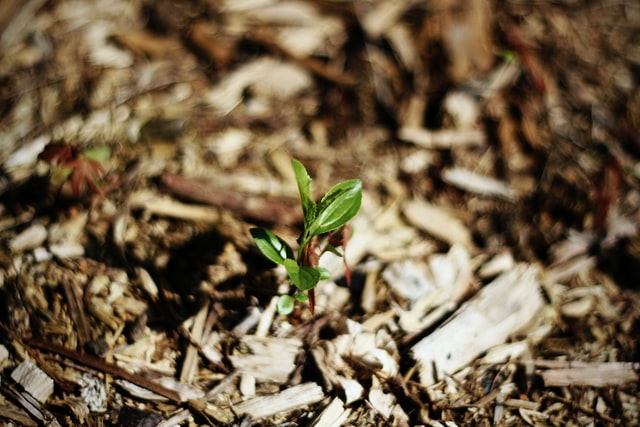Before you decide to start mulching your lawn, you must understand the benefits and disadvantages of mulching:
- Learn about the advantages and disadvantages of inorganic and organic mulches.
- Find out whether mulches are reusable or not. If you plan on using mulch, you will want to research the cost and whether it is worth it.
- If you decide to use mulch, choose a compostable or reusable mulch.
Benefits and disadvantages of mulching
The benefits of mulching are many. Besides helping improve soil moisture, mulching can also control air and soil temperature. It also increases organic matter and improves cationic nitration and mineral solubility. Some benefits of mulching include moderated soil temperature and reduced plant winter injury. In addition, mulching adds humus to the soil, which helps prevent compaction and increases the water-holding capacity of sandy soils. Lastly, it can help suppress weeds and slow the soil’s warming. However, there are also some disadvantages to mulching.
Grass clippings can become so clumped and matted that they generate hydrogen sulfide gas, which is toxic and can cause respiratory problems. Furthermore, grass clippings can attract pests, such as slugs and snails. Additionally, mulching Montgomery, AL, creates an environment for fungi, which can damage plants. It can also be expensive to transport and can pose a fire hazard.
Organic versus inorganic mulches
You have probably heard of organic versus inorganic mulches and have wondered which one is better for your gardens. Organic mulches are made of by-products from other industries, such as wood chips and straws. Other organic mulches include compost, sawdust, and rice hulls, while inorganic mulches are made of artificial materials such as rocks, gravel, rubber chips, and plastic sheeting.
The main difference between inorganic and organic mulches is cost. Organic mulches are more expensive than inorganic mulches, and their prices vary according to what type is used. The cheapest inorganic mulch will cost less than the most costly organic mulch, but it will take longer to break down. On the other hand, inorganic mulches are less expensive and require less time and energy to remove and recycle.
Cost of mulching
There are several factors to consider when estimating the cost of mulching. First, the type of mulch used and its volume will determine how much you pay. For example, crushed or shredded hardwood mulch is generally cheaper than triple-shredded ground mulch, which costs about $40 per cubic yard. Fine or double-shredded ground mulch is better for trees and shrubs and costs slightly more. On the other hand, Mulching sheets cost about $20 per 100-foot roll. Mulching sheets cover the soil with a black or metallic layer to prevent weed growth and retain moisture.
In addition to the amount of money you pay for the mulch itself, you should also consider the time required to perform the job. A truckload of mulch costs more than a bag of soil amendment, but if you’re ordering multiple cubic yards, you may be able to spread the cost over a more extended period. You might also be able to save money by ordering mulch locally rather than buying it from a large distributor. If you plan to hire a lawn care service to do the job, it’s best to get a quote per cubic yard, including delivery charges, which are typical $25.
Reusable mulches
Reusable mulches are excellent for a variety of reasons. They prevent erosion and nutrient leaching from downpours, and they let water filter into the soil over time. Wet soil can lead to moldy and rotting fruits, so raising them above the ground can prevent them. Mulches also help to improve moisture levels in any soil, including sandy ones. They increase soil moisture retention and create pore spaces in heavier soils, easing waterlogging problems.
Reusable mulches help maintain soil moisture levels and temperatures. It also prevents weed growth, reduces soil erosion, and protects the soil from hard-baking and drying effects. In addition, mulched soil is more excellent than bare soil, allowing plants to grow evenly and consistently. Reusable mulches also keep the soil moist and prevent compaction. Moreover, mulched areas require little to no maintenance.
Newspaper as mulch
Some newspapers are excellent for compost and mulch, while others can hinder the growth of plants. These papers may contain dyes or chemicals, and the glossy pages and images may also be harmful. If you’re considering using newspaper as mulch, make sure it has no dyes or chemicals. Also, make sure you don’t mix the newspaper with soil that’s already been enriched with fertilizer. Listed below are some of the pros and cons of newspaper mulch.
Shredded newspaper is an excellent mulch. Be sure to apply it about three inches deep and wet it down before applying it to your garden. You can use a watering can or use your garden hose on a light spray setting to wet it down. The newspaper will hold water. You can also cover the newspaper with the second layer of mulch, such as straw or shredded wood chips. Once this layer of mulch is applied to your garden, you’ll have an environmentally friendly, organic way to enhance the look of your landscape.
